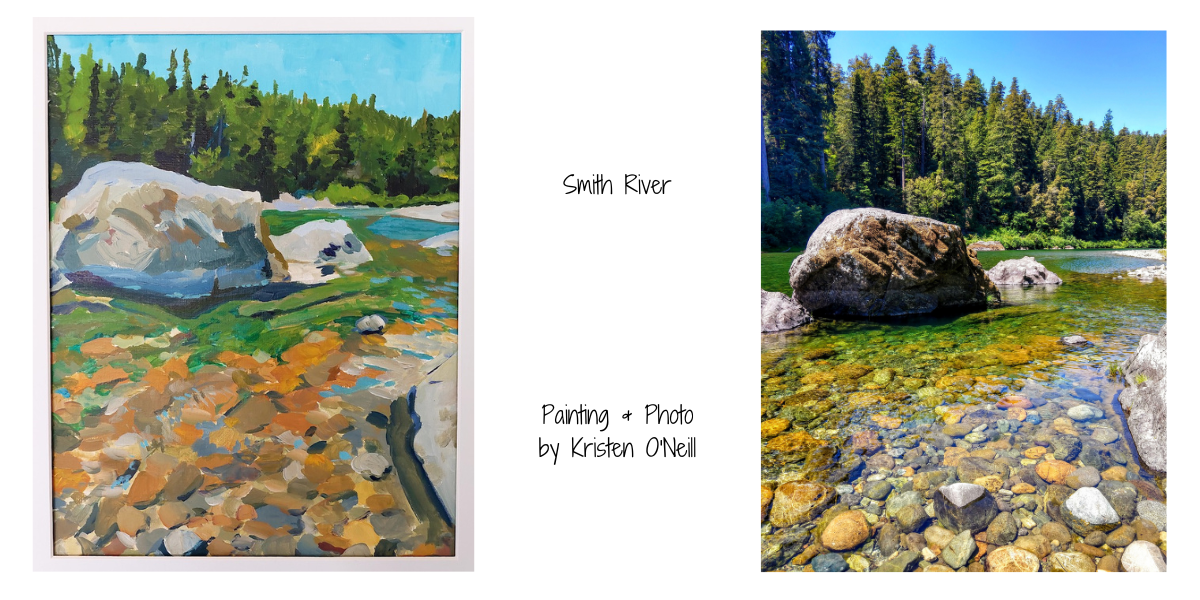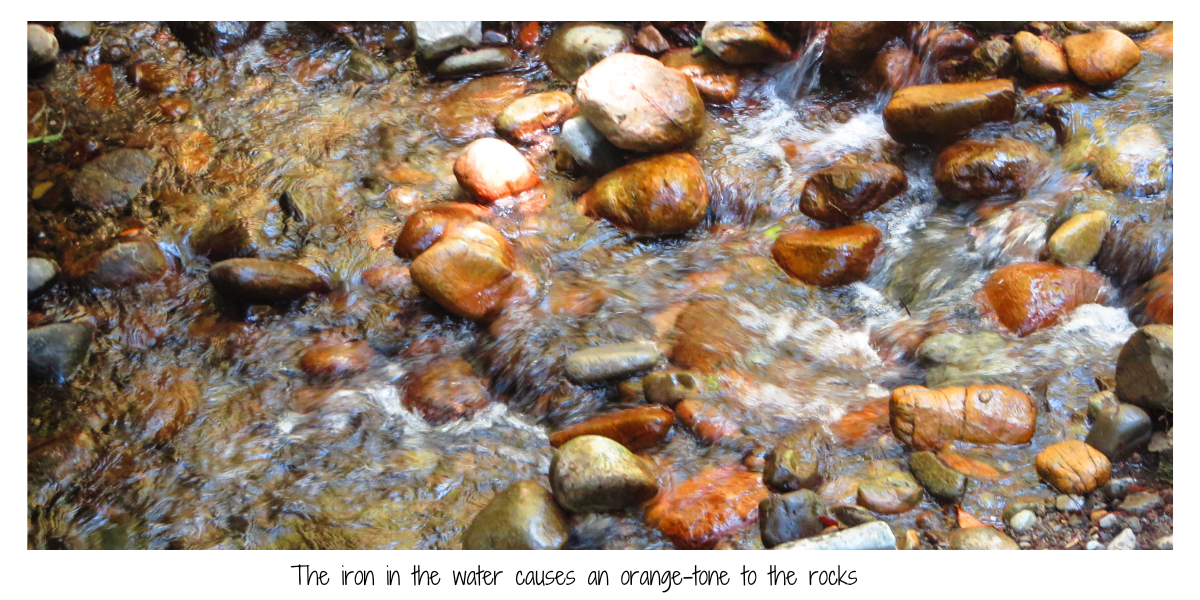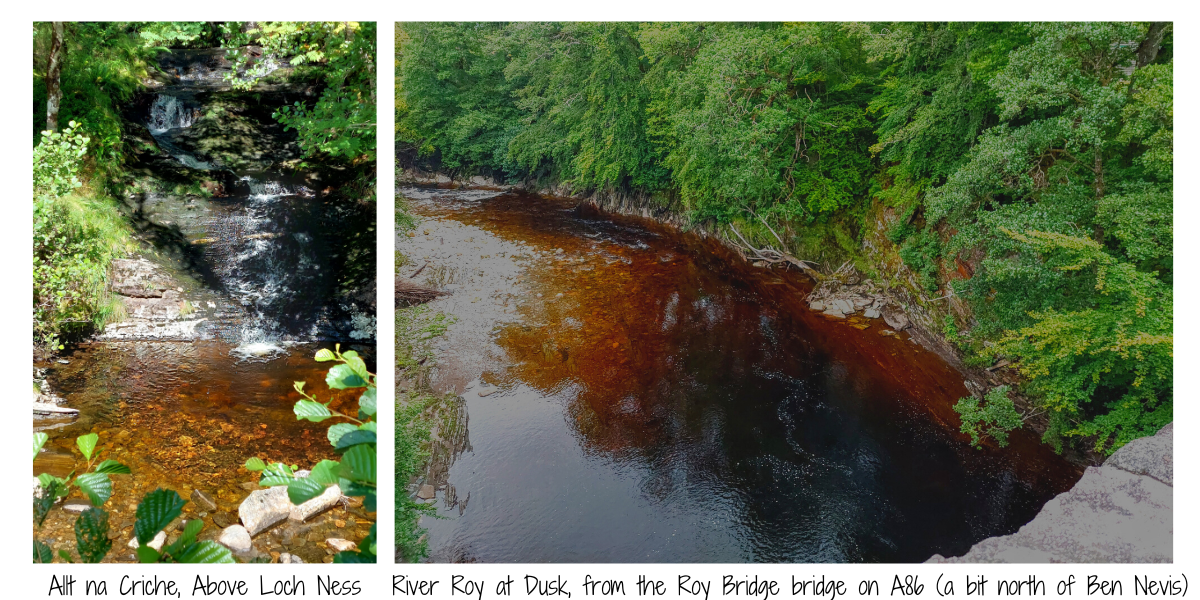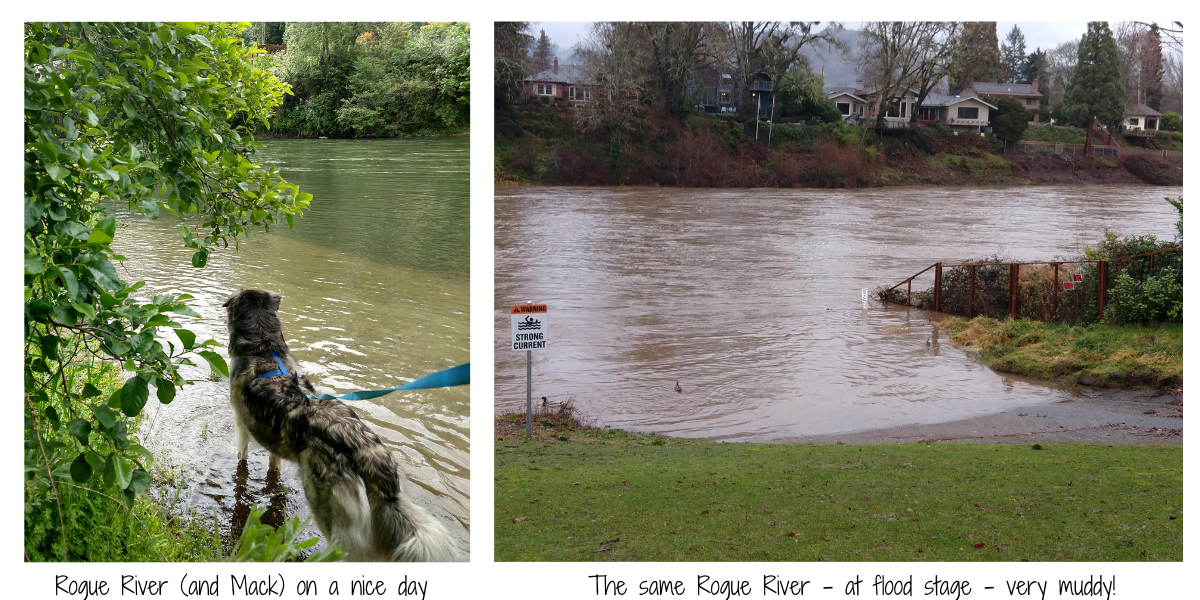
One of the first things I noticed about some rivers in Oregon, and the Smith river in Northern California, are their colors. Wowza. It seems like unbelieveable, magical, fairy-land kinds of color. The water is clear, yet emerald. Not the murky green of algae blooms, but clear to bottom and such a different color than the sky, you know this color is coming from the water itself, not just reflecting.
Oregon has lots of volcanic rock, and as the water travels through these rocks in the mountains it gathers minerals. By the time the water makes its way to a river, it’s full of minerals. The Umpqua river is crystal-clear, and yet has a beautiful emerald tone to it. It has columnar basalt (which are the same type as the famous looking stones of the Giant’s Causeway in Northern Ireland.) Basalt is rich in magnesium and iron.
The Smith river, which is the cleanest river in the United States outside of Alaska, also has these beautiful volcanic mineral colors to it. You can feel the minerals on your skin after going for a summer swim.

Limestone
Limestone is primairly calcium carbonate and is white in color. A river will begin to break mineral deposits down into smaller particles. Some will stay afloat in the water, and some will settle to the bottom of the river. The tiny white particles reflect the light, especially the green and blue wavelengths.

Iron
Literally, a rusty color, iron particles create a red-orange or brownish-orange hue. In a small creek I grew up near, the rocks collected iron particles on them, creating a more orange scene under the water than above.

Manganese
Manganese can turn water a brown or rust color. Many rivers in the Scottish Highlands are brown. I will admit, my first instinct was to say humorously, “Look, the rivers are made out of whisky!” Because, we know, I can’t resist trying a joke. But, these rivers are flowing through peat beds, picking up their color. I had never even thought of clear-brown water before seeing them for myself in the summer of ’22.

Muddy River
“The Big Muddy” is the Mississippi River. This river is at the bottom of a watershed that stretches across a giant swath of America – from the eastern Rockies to the western slopes of Appalachia. This water has experienced a lot of moments to pick up particles, especially from agriculutral runoff. The Mississippi River is murky.
While the Mississippi is a large example of this, many rivers around the world are slity or poluted, creating a brown, murky feeling, very unlike the clear-brown feeling of the Scottish Highland rivers.
Here is a photo of the Rogue river, nearly flooding over. Notice how much more brown it is after the rains fill it with “dirty” water. It is common for rivers to go through muddy stages after it has rained.

Pigments
Pigments create the color of paint. The original pigments of paint were mineral-based. Nowadays, there are also factory made paints. Mangenese Blue is a factory made paint. However, Manganese black is mixed oxide of maganese and iron.
Iron oxides create many common “earth tones,” – specifically the ochres, siennas, and umbers. These can be a great starting point to create the colors that you are seeking in your painting of these rivers. Make sure you are aware that these mineral colors are opaque in nature. Thus, they will make a good muddy river, but not a clear one.
I like using a phthalo green to create the emerald of the Smith or Umpqua rivers. This mixed with other transparent colors can help create the color I am looking for, while preserving the “clarity” of the water.
